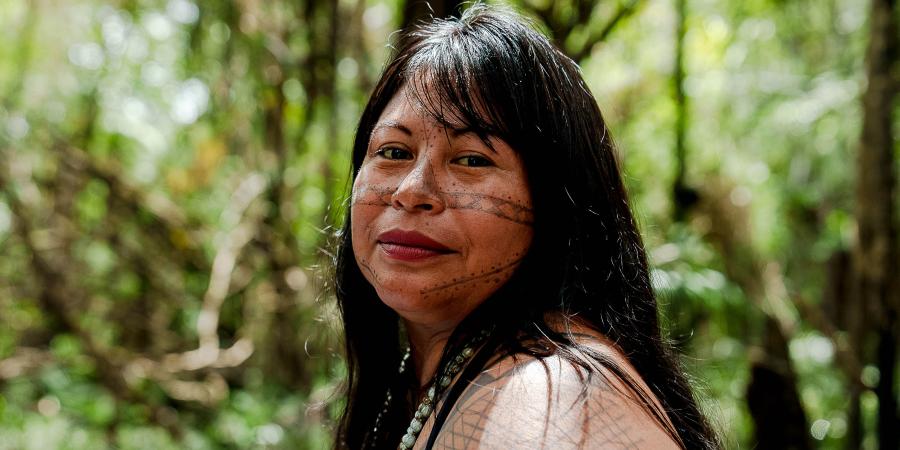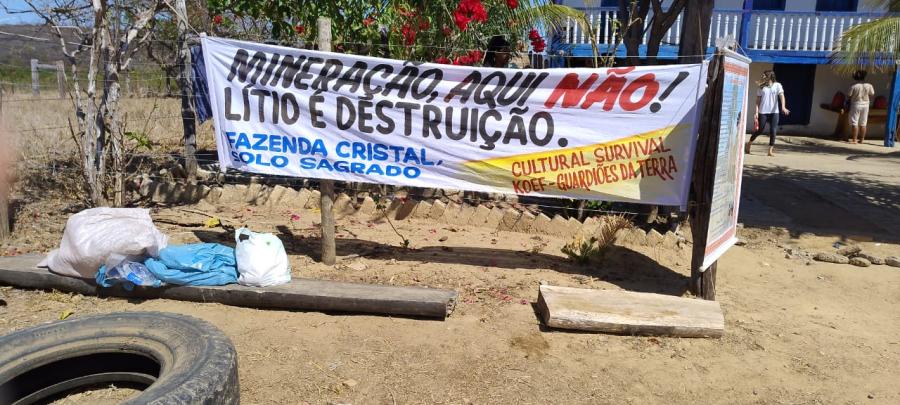Location, Land, and Climate
The Xavante once lived in northern Brazil, between the Tocantines and Aragaia rivers. They moved away from advancing settlers in the early nineteenth century to lands they now occupy west of the Rio das Mortes.
After Brazil's capital moved to Brasilia and the military government began "opening up" the interior in earnest, many indigenous peoples who had been protected by remoteness suffered. The Xavante did, too, but they also acquired a reputation for ferocity because they fought to defend their lands when the frontier caught up with them.
In the 1960s, government plans involved building a road across Xavante land to link with the Trans-Amazon Highway. The ensuing flood of settlers led to intense conflict. The government established several successive reserves for the Xavante, but none were demarcated, while the overburdened and corrupt Indian Service frequently gave out titles to Indian and regardless of the reserves. Tensions grew, and by the late 1970s the Xavante had pushed many settlers off the land. Xavante leaders demanded action in Brasilia. After dramatic protests and repeated negotiations, Xavante land was guaranteed.
There are about 10,000 Xavante now. Although much jungle growth borders the rivers in their land, they prefer the dominant savanna, where the poor soil supports grasses and scattered trees.
Livelihood
Nomads, the Xavante hunt and gather. The men spend much time planning, and later recounting, the hunt. The women bring in most of the food by gathering fruits, nuts, and wild roots.
The trek is integral to the nomadic life. An entire camp will pick up and move to take advantage of natural resources. When a tribe sets up camp more permanently, it places the huts in a semicircle opening onto a water source. This lifestyle has changed recently because settlers and ranches now surround the Xavante and control the country they used to roam. The Xavante are therefore trying to become settled ageiculturalists.
Cultural Systems
The Xavante group themselves into clans, lineages, and factions. They believe their people began when the three clans rose from the ground. The broadest category is the patrilineal clan. Facial paint distinguishes the clans. Members of a clan refer to waniwiha, "people of my side," and wasi re'wa, "others." Lineage members descend from a particular family. Factions are composed of a libneage and its supporters, who are not necessarily of the same clan. Factions for the basis for community politics.
The chief heads the dominant faction. He keeps peace between factions, leads the general men's council, directs communal activities like hunting and harvesting, and performs ceremonies. The chief can't give direct order, but he exerts pressure through leading the main clan. He must balance his peacekeeping role with loyalty to his faction.
The Xavantes' entry into the Brazilian political system has altered the chief's role considerably. Young men now have strong outside interests that undermine the importance of tribal consensus, so a faction may act on its own. Increasingly prestige comes from a chief's ability to communicate with the outside world.
Each male passes through four stages: children, boys (living in bachelors' huts), young men (initiated but not nature), and mature men. Boys enter the bachelors' hut on an appointed day. They are painted red over their whole body and wear a white collar with two macaw feathers. During five years in the bachelors' hut, boys learn to hunt and perform ceremonies.
After initiation, a boy becomes a young man and anxiously waits for his wife to mature. Very young girls usually are assigned husbands several years their senior. When a girl is old enough, her husband comes to live with her family. A man may have several wives.
SUGGESTED READINGS
David Maybury-Lewis, Akwe-Xavante Society, Clarendon Press, 1967.
David Maybury-Lewis, The Savage and the Innocent, Beacon Press, 1965, 1988.
Pia Maybury-Lewis, "One Step Forward, Two Steps Back," Cultural Survival Quarterly, Volume 8, Number 2, 1984.
SUPPORT ORGANIZATIONS
Amazon Research and Training Program, Center for Latin American Studies, University of Florida, Gainesville, FL 32611
Centro de Trabalho Indigenista, Rua Fedalgo 548, Sala 13, 05432 Sao Paulo, Brazil
Centro Ecumenico de Documentaco e Informaco, Avenida Higienopolis 983, CEP 02138, Sao Paulo, Brazil
Unaio dos Nacoes Indigenistas, C.P. 70880, 70.000 Brasilia DF, Brazil
Current Problems
The Xavante contest the boundaries of their reserves, arguing that they can't sustain hunting and gathering on the current amount of land. Ranchers and farmers on land abutting the reserves want the government to maintain existing borders. Tensions between them and Xavante led to armed stand-offs and Xavante road blocks on highways running through the reserves. Government aid programs to the Xavante forestalled further actions by either group, but as the situation calmed down, government aid fell off. The situation remains unresolved.
In 1978, the Brazilian Indian Protection Service launched an ambitious rice-cultivation program in the reserves. The program ran out of funds, leaving the Xavante in the lurch, leaving the Xavante in the lurch, leaving the Xavante in the lurch. The project made the Xavante dependent on new technology and temporarily created demands for sugar and other outside products. Now sugar intake has soared, and this, together with other dietary changes, has spoiled their once excellent teeth and threatens their general level of health.
Government policies allocate aid to villages, so the number of Xavante villages has increased. Finally, the existence of a cash economy controlled by men has marginialized women's labor.
Article copyright Cultural Survival, Inc.



